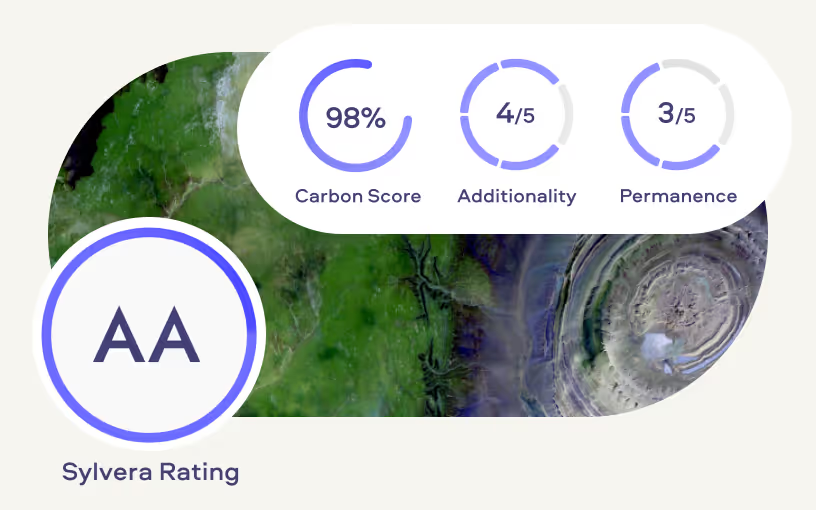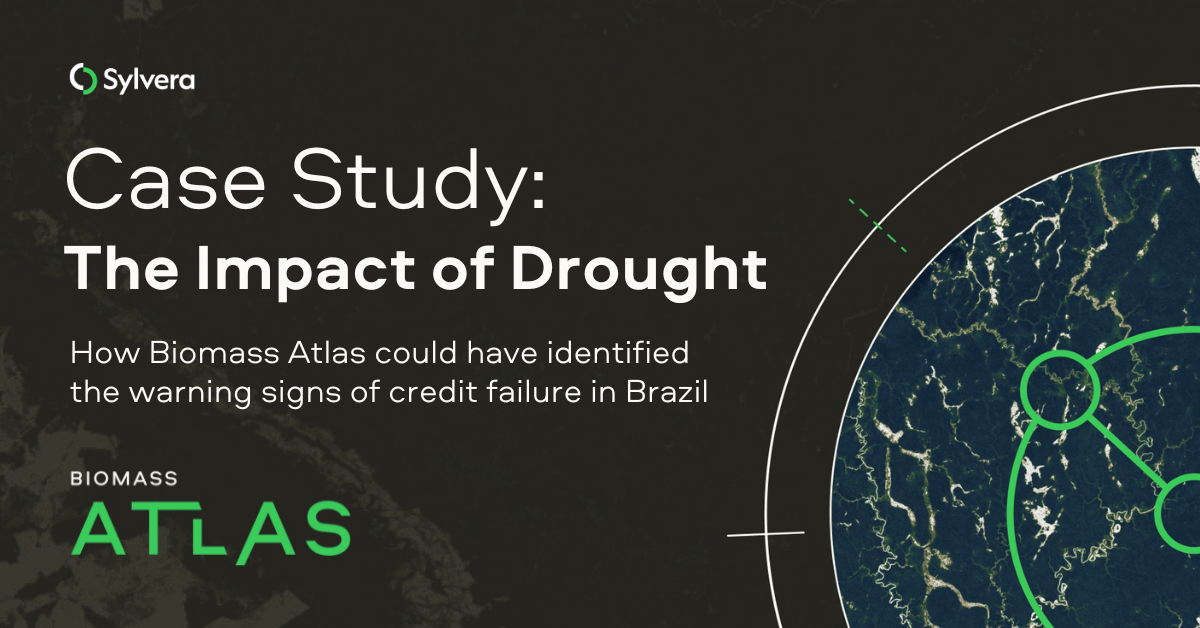“Over the years we’ve invested significantly in our field data team - focusing on producing trusted ratings. While this ensures the accuracy of our Ratings, it doesn’t allow the scale across the thousands of projects that buyers are considering.”
For more information on carbon credit procurement trends, read our "Key Takeaways for 2025" article. We share five, data-backed tips to improve your procurement strategy.

One more thing: Connect to Supply customers also get access to the rest of Sylvera's tools. That means you can easily see project ratings and evaluate an individual project's strengths, procure quality carbon credits, and even monitor project activity (particularly if you’ve invested at the pre-issuance stage.)
Book a free demo of Sylvera to see our platform's procurement and reporting features in action.
Sylvera is intent on providing the most accessible carbon project insights. Part of this accessibility involves providing definitions of key terms and concepts.
In this article, we’ll take you through 4 key terms, which make up the core pillars of our ratings system.
But first, let’s review what Sylvera carbon credit ratings are and what their purpose is.
What are Sylvera carbon credit ratings?
Sylvera carbon credit ratings are indications of the likelihood that the claimed carbon impact of a project is a true representation of its real impact.
Our carbon credit ratings help foster the development and smooth functioning of voluntary carbon markets (VCMs) by providing transparent information and insight to market participants, and allowing participants to more easily compare the relative merits of voluntary carbon credits across different standards and methodologies.
Now that we’ve defined what Sylvera carbon credit ratings are, let’s discuss the scale we use to catalogue these ratings.
Rating scale: AAA to D

Our ratings are provided on a scale of AAA to D. AAA is considered the highest grade and D is considered the lowest grade.
We might disclose issues relating to a project which means that it couldn’t be rated. Such issues can be fundamental red flags, such as potential fraud, or the absence of the necessary data to produce a rating.

Rating core pillars
Our carbon credit ratings are based on three core pillars: carbon score, additionality and permanence. We’ll take you through each one of these pillars below.
1. Carbon score
Our carbon score verifies whether a project is accurately reporting on its activities, which directly translate to its overall avoidance or removal of CO2, and other GHGs.
We verify these activities, which include the planting of trees and the protection against deforestation, by comparing data provided by the project developers with our own measurements using satellite imagery and machine learning (ML). This includes any increases in GHG emissions that have occurred outside the project boundary as a result of the project’s activities, known as leakage.
- Carbon emissions reductions or removals: How much carbon dioxide (CO2), or greenhouse gases equivalent to carbon dioxide (CO2e), have been reduced or removed from the atmosphere.
- Carbon credit issuance: Carbon project developers must request that carbon credits are issued by a carbon credit verification body, such as Verra. The number of credits issued are the carbon credit issuance.
- Carbon stock: This refers to the amount of carbon stored in a specific system. For example, a tree, a forest, the ocean or a rock formation.
- Ground-truthing: Data that is collected “on-the-ground” in a specific location. For example, our team visits forests in Gabon and Peru to take measurements of trees and forests in these areas.
- Geospatial: Data that features geographic elements, such as coordinates.
- Multispectral: This refers to multiple electromagnetic wavelengths and frequencies. For example, a multispectral sensor can reveal information not visible to the human eye.
- Radio Detection and Ranging (radar): This is a technology that uses radio waves to identify objects and their shapes, for example, mountains.
- Light Detection and Ranging (lidar): This is a technology similar to radar but uses a laser light pulse rather than radio waves.
- Earth observation (EO): This refers to data that is collected about the Earth usually with satellites fitted with remote sensing capabilities. Remote sensing uses radiation to identify the shape of objects.
Carbon score is communicated in percentages. For example, if our analysis finds that the project has exceeded its reduction claims it will get a percentage higher than 100%. If our analysis finds that the project has not met its reduction claims it will get a percentage lower than 100%.
It’s important to note that carbon score measures the performance of a project to date with respect to its verified claims, by a verification body such as Verra, and cannot be considered in isolation. Additionality and permanence must also be taken into consideration to assess the true impact of a project.
2. Additionality
A project is considered additional if the project activities would not have occurred without the revenue from a voluntary carbon credit.
To analyze this, we must first learn more about two possible scenarios:
- VCMs scenario: In this case, the project’s activities are being implemented as a direct result of financial support received from VCMs. This is the current scenario.
- The business-as-usual (BAU) and baseline scenario: What would theoretically have happened if VCMs didn’t provide the finance necessary to support the project’s activities? This hypothetical scenario is known as the BAU case and is used to establish a project’s baseline. For example, before the project, there may have been on-going and increasing deforestation near the project. By modeling this deforestation over time, a project’s theoretical baseline of annual forest cover loss, without the protection afforded by the financing coming from VCMs, can be quantified. How well the BAU case and the baseline is defined and modeled, also known as the “strength” of these hypothetical scenarios, is an essential consideration when analyzing a project’s additionality.
Therefore there are two other ways in which additionality can be defined:
- Additionality refers to whether emissions reductions above and beyond what would have occurred in the BAU case have materialized as a direct result of revenue from voluntary carbon credits.
- Additionality refers to the causal relationship between the project's activities and the climate benefits it claims including the strength of the project’s baseline.
Additionality is scored out of 5, where 5/5 indicates very high confidence that a project is additional and 1/5 indicates we found a serious red flag questioning the project’s claims of additionality.
3. Permanence
Permanence refers to the degree of confidence that the carbon emissions reduction or sequestration will persist for the long term.
- Carbon sequestration: This is when carbon is taken out of the atmosphere and trapped in biological or geological stores. This might include a tree taking in CO2 and carbon becoming part of its biomass. Other forms of life, including people, also store carbon in their biomass. Over time, when they die, what remains of their bodies, shells and bones, become covered in sediment and are stored in the rock formations of the Earth.
Permanence is scored out of 5. A very high permanence is indicated by 5/5 and the project carbon credits are very likely to be valid beyond the long term. A very low permanence is indicated by 1/5 and the project carbon credits are highly unlikely to be valid in the long term.
4. Co-benefits
Each project assessment also contains information about a carbon project’s co-benefits.
Importantly, we don’t take the co-benefits score of a project into account when determining the project’s overall rating. This is because the project’s overall rating is a representation of the likelihood that the project’s claimed carbon impact is a true representation of its real carbon impact. However, projects can have an impact on more than carbon, namely, they can have an impact on communities and on the environment.
Co-benefits are the additional benefits the project brings to local communities and the environment — specifically biodiversity — beyond carbon sequestration.
Community scores are aligned to the United Nations’ Sustainable Development Goals (SDGs or UN SDGs) and normalized by emissions.
Biodiversity scores consider species richness, regional threats to biodiversity, and project actions to reduce pressure on biodiversity.
- SDGs or UN SDGs: These are 17 goals agreed, such as No Poverty, agreed to be accomplished by the United Nations by 2030.
- Biodiversity: Also known as “biological diversity” this refers to the wide range of species, differences within species and ecosystems that make up the living world.
- Species richness: This refers to the number of species found within a specific area.
Co-benefits are scored out of 5. Exceptional progression of targeted SDGs, as well as extraordinary species richness and high-quality activities to reduce pressure on biodiversity is indicated by 5/5. Very limited progression of targeted SDGs, as well as very low species richness and deficient activities to reduce pressure on biodiversity is indicated by 1/5.
Download our white paper to learn more about how we develop and test our ratings frameworks and production processes here.















